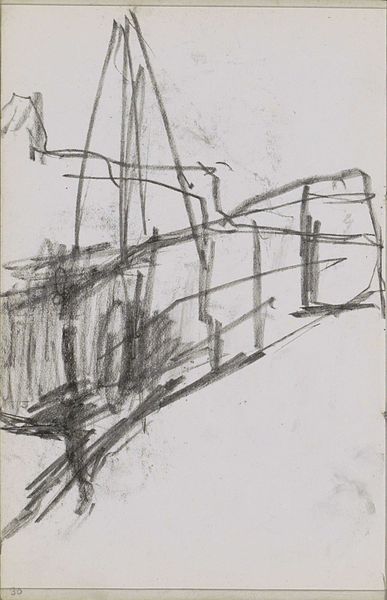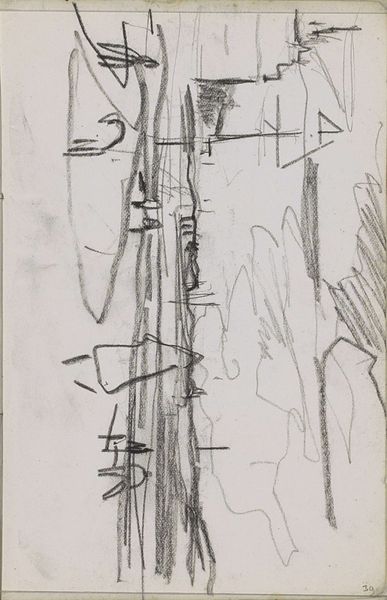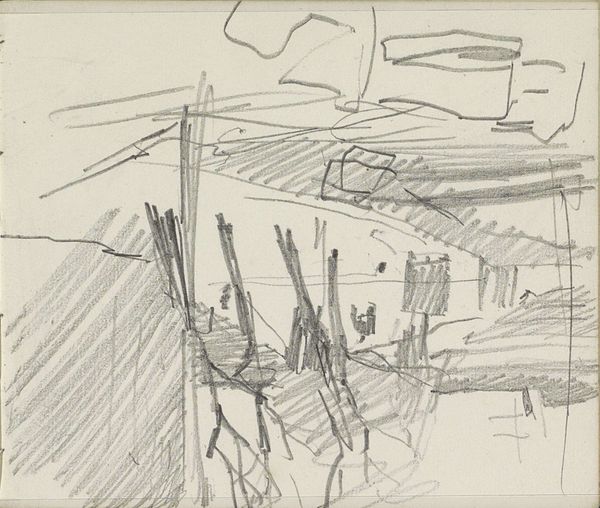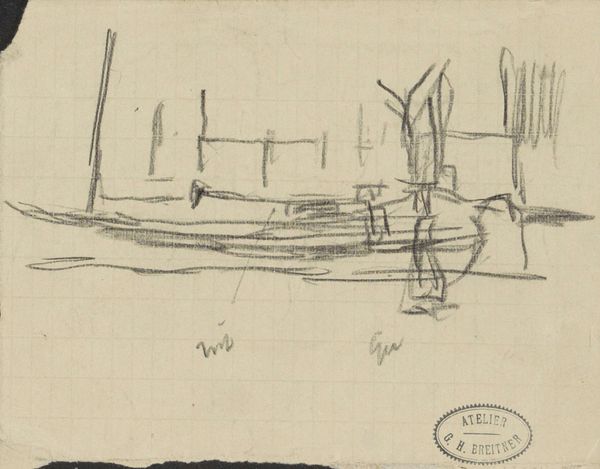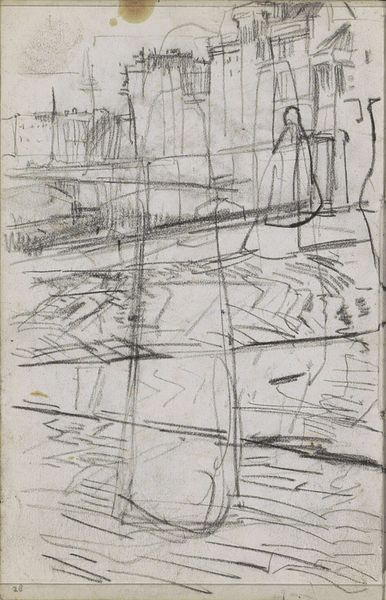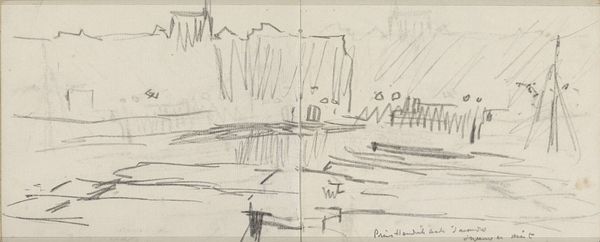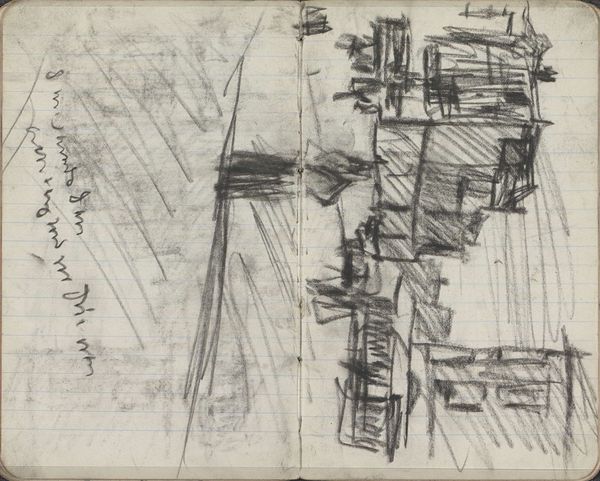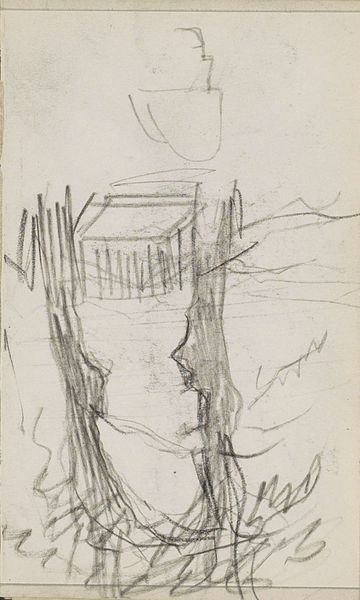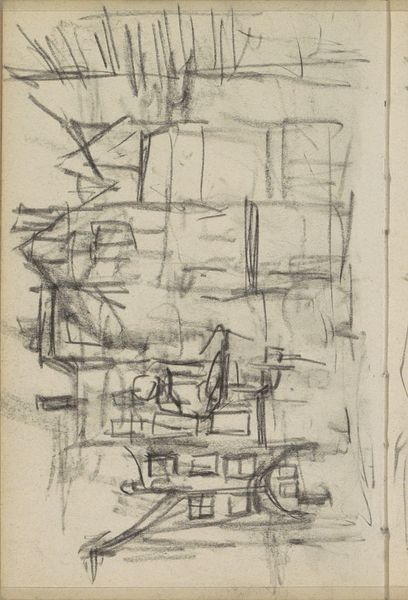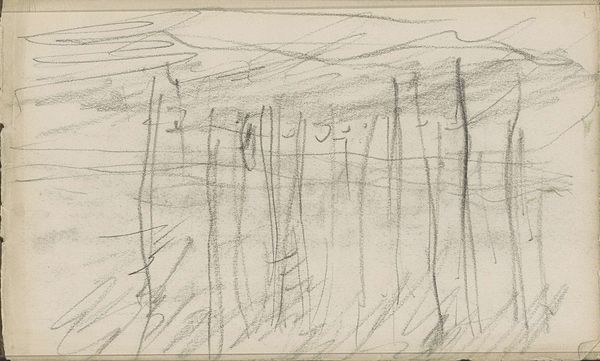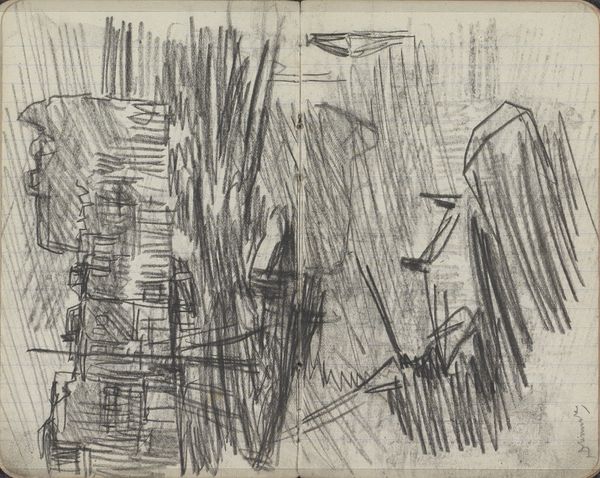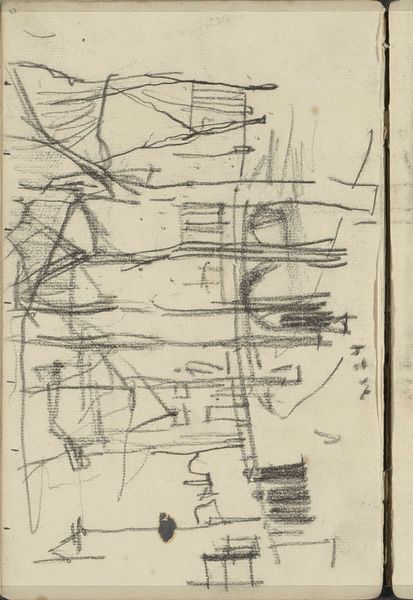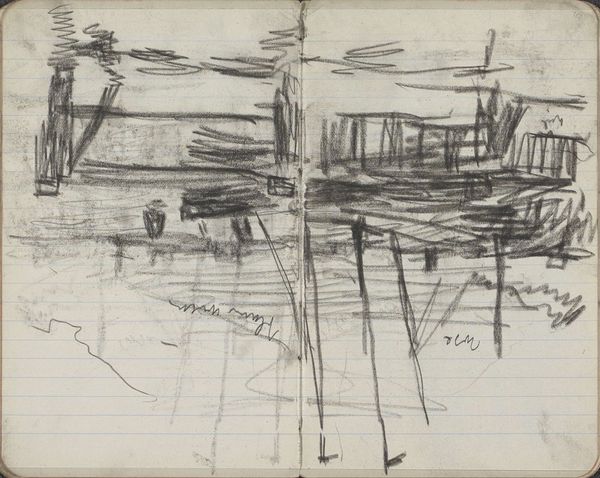
Gezicht op de Prinsengracht te Amsterdam met de Westerkerk c. 1886 - 1891
0:00
0:00
drawing, pencil
#
drawing
#
dutch-golden-age
#
impressionism
#
sketch book
#
landscape
#
personal sketchbook
#
idea generation sketch
#
sketchwork
#
ink drawing experimentation
#
pen-ink sketch
#
pencil
#
line
#
sketchbook drawing
#
cityscape
#
storyboard and sketchbook work
#
sketchbook art
#
realism
#
initial sketch
Copyright: Rijks Museum: Open Domain
Curator: This drawing offers us a glimpse into George Hendrik Breitner’s creative process. Made around 1886 to 1891, it’s entitled “Gezicht op de Prinsengracht te Amsterdam met de Westerkerk,” which translates to “View of the Prinsengracht in Amsterdam with the Westerkerk.” Editor: My first thought is how raw and immediate it feels. It's just pencil on paper, a direct impression of the scene. You can almost feel Breitner standing there, rapidly sketching to capture the light and atmosphere. Curator: Absolutely. Notice the rapid, almost frantic lines he uses. Breitner was deeply interested in capturing modern life, and here, the Westerkerk spire acts as a grounding element amidst the bustling port activity. It’s interesting to note, too, that the Westerkerk has strong connections to Rembrandt, who is buried there. This connection brings up layers of art historical dialogue. Editor: It’s fascinating how the drawing captures the energy of the place, the industry around it. These canal-side scenes show the materiality of Amsterdam at the time: the goods being shipped, the labor involved. And with the very loose sketch lines we can see what it is: the record of quick, on-site observations rendered in readily available, cheap material – graphite. Curator: Precisely. He uses those lines to construct not just physical space, but a psychological one too. There’s a melancholic undertone in his work. While the Westerkerk is a strong, familiar presence, it also becomes part of the background – an everyday experience in a changing world. Editor: And in terms of artistic labour, we have here a preliminary study – the artist preparing and absorbing himself within his context, experimenting with the interplay of lines. The marks left on the sketchbook are physical evidence of Breitner grappling with representation and the quickly modernising world. Curator: Considering all these visual notes, the symbolism is less explicit than one might expect in a Golden Age cityscape. This scene becomes more about a fleeting feeling or a moment in time. Editor: Yes, it prompts consideration of how impressions – like this drawing itself – are constructed, consumed, and carry cultural weight over time, showing how both people and resources were always already entangled. Curator: It does invite reflection. Breitner’s drawing is a valuable opportunity to pause and see a specific world through the eyes of someone immersed within it. Editor: Indeed, it reveals that even in what appears to be just a simple drawing, you can find traces of wider systems of materials, tools and visual convention.
Comments
No comments
Be the first to comment and join the conversation on the ultimate creative platform.

